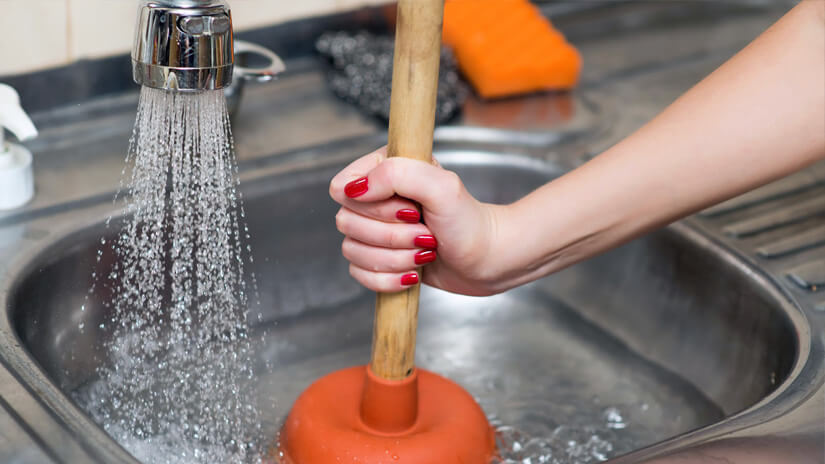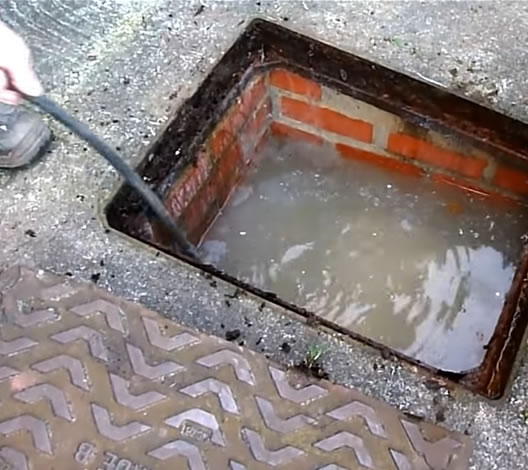The author is making several good points on Tips for Dealing with Clogged Drains and Sewer Lines as a whole in the content beneath.

Introduction
Handling an obstructed drain can be a discouraging experience, interfering with everyday tasks and possibly triggering damage to your home. Nevertheless, before reaching out to plumbing professionals, there are steps you can require to address the concern yourself. In this overview, we'll check out DIY solutions and preventive measures to deal with a blocked drain efficiently.
Identifying the Problem
The very first step in addressing a blocked drainpipe is recognizing the signs. Slow-moving water drainage, gurgling sounds, foul odors rising from drains pipes, or water support up prevail indications of an obstructed drain. Identifying these signs early can aid avoid further difficulties.
Picking the Right Pipes Service
When selecting a plumbing service, think about variables such as experience, licensing, and customer reviews. Choose a reputable plumbing professional with a performance history of quality craftsmanship and clear pricing methods.
Price Factors to consider
The price of professional drain cleaning services can differ depending on the severity of the obstruction and the plumbing's prices. Demand quotes from multiple companies and ask about any kind of surcharges to ensure transparency and avoid surprises.
Security Measures
When trying DIY drainpipe cleansing, prioritize safety. Put on protective handwear covers and glasses to avoid contact with harmful chemicals or germs. Never mix different drain cleansing items, as this can create hazardous fumes.
Situation Studies
Real-life examples show the performance of DIY solutions and the value of prompt expert intervention in settling drain obstructions.
Usual Causes of Obstructed Drains
Recognizing the elements that contribute to drain pipes obstructions is necessary for efficient resolution. Usual wrongdoers consist of hair, soap scum, oil, food debris, and international things like sanitary items or paper towels. Tree origins invading below ground pipes can likewise create considerable clogs.
DIY Solutions
For minor clogs, a number of DIY solutions can be efficient. Putting boiling water down the drain can aid liquify oil and particles. Baking soda and vinegar or a blend of salt and cooking soda can work as natural cleaners. Utilizing a plunger or pipes snake to remove obstructions is an additional choice.
Tools and Tools
Having the right devices available can make do it yourself drain cleaning extra effective. A plunger is a functional device for getting rid of clogs in sinks, toilets, and showers. A plumbing snake or auger can reach deeper obstructions, while drain cleansing chemicals can be utilized cautiously for stubborn clogs.
Preventive Measures
To stay clear of future obstructions, embracing safety nets is critical. Install drain guards or filters to capture hair and particles before they go into the pipes. On a regular basis flush drains with hot water to dissolve oil build-up, and prevent throwing away grease or strong waste down the drain.
When to Call a Specialist
While DIY remedies can settle minor clogs, specific indicators show the need for specialist aid. Relentless blockages, foul odors despite cleaning up efforts, or multiple drains pipes backing up all at once are warnings that call for expert treatment.
Verdict
By complying with the pointers described in this overview, you can properly take on obstructed drains pipes and stop future pipes issues. Whether opting for DIY remedies or seeking specialist help, timely action is vital to preserving a healthy and balanced pipes system and maintaining the honesty of your home.
How to Clear a Clogged Drain Yourself (And When to Call In the Professionals)
What Can Clog a Drain
Dirt Skin flakes Hair Grease Soap scum Food Offset pipes Tree roots Small objects Mineral buildup DIY Tricks to Unclog a Drain
You can fix this! Once you have identified the source of the clog (or have a vague idea), you can try one or a combination of these fixes in order to clear your plumbing.
Wire Hanger or Snake
Untangle and clear out hair from a drainpipe with a homemade snake. Use a straightened-out wire hanger with a 90-degree angle hook to locate the clog and drag out any unwanted material.
Remember not to push the clog further down to where the wire hanger cannot reach! If you need to follow up with a plunger, give it a try. Your efforts might be more successful after it’s been wire-snaked.
If you want to get fancy and don’t have a wire hanger to spare, head to the store and pick up a hand-operated drain snake. You can get one for $10-$30. It may save you the hassle, and provide additional length to reach deep into the clogged pipe.
Plunger
A cup plunger has a suction cup attached to a wooden handle. The rubber creates a seal around the drain, and increases the pressure force of the plunger.
Plunge for 30-second increments to loosen the clog. This may need to be repeated over the course of 15-20 minutes. Once plunged, run the water to flush the remaining material out of the drain.
Remember– never use a plunger if you have used a chemical drain cleaner. These chemicals can splash up from the force of the plunger and cause serious injury or burns.
Boiling Water
Hot water can sometimes break up materials into a flushable amount. Dirt, grease, and soap buildup requires heat in order to unstick from surfaces.
Take your kitchen kettle and heat your water to a boil. Once it reaches a rolling boil, pour it directly down the drain into the blockage. Carefully follow with plunging, if necessary.
Don’t worry if this takes more than one try! It can often take multiple kettles and repeated plunging in order to clear a particularly stubborn clog.
Chemical Drain Cleaner
As a last resort, pick up a bottle of chemical drain cleaner. Drain-cleaning chemicals are potent, and not very good for the environment.
You may need to wear protective eyewear in gloves before handling your bottle of chemical drain cleaner. Follow the instructions printed on the bottle, and flush with water as soon as the instructions allow. Do not follow with plunging.
Baking Soda and Vinegar
As a safer alternative to chemical drain cleaner, baking soda and vinegar can create a chemical reaction that clears tough clogs.
Combine one cup of cleaning vinegar with one cup of boiling water, and set aside. Once you have done this, pour half a cup of baking soda down the drain. Give the baking thirty seconds to settle and cover a large portion of the problem drain.
Following the baking soda, pour down your vinegar and hot water solution. Once the vinegar and baking soda combine, the mixture will bubble and fix. Let this reaction fizzle in the drain for about an hour.
After an hour, follow with a kettle’s worth of hot water. The heat and liquid should flush out any remaining material.
When to Call a Plumber
If your DIY attempts haven’t cleared your clog drain, it’s time to call in a professional. It’s not worth losing access to your kitchen sink or high-traffic bathroom. A clog in a vital area can keep you from the things you’d rather be doing, and derail your routine.
Anytime a clog is causing water to spread is a time to call in a plumbing service. What starts out as a little bit of water can quickly grow into serious, expensive water damage.
Additionally, a serious clog can result in burst pipes or serious leaks. Make sure you know when to take it seriously!
https://myguysnow.com/how-to-clear-a-clogged-drain-yourself-and-when-to-call-in-the-professionals/

I hope you enjoyed our section on How to handle a clogged drain in your home. Thanks for spending some time to read our blog post. Sharing is caring. Who knows, you might be doing someone a favor. We treasure your readership.
Click Here